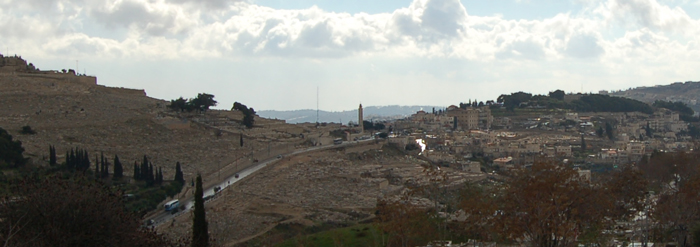Title Page
Page 381
Page 382
Page 383
Page 384
Page 385
Page 386
Page 387
Page 388
Page 389
Page 390
Page 391
Page 392
Page 393
Page 394
Page 395
Page 396
Page 397
Page 398
Page 399
Page 400
Page 401
Page 402
Page 403
Page 404
Page 405
Page 406
Page 407
Page 408
Page 409
Page 410
Page 411
Page 412
Page 413
Page 414
Page 415
Page 416
Page 417
Page 418
Page 419
Charles Clermont-Ganneau was in the French Diplomatic Corps. He discovered the Moabite Stele¹ dated to about 850 BC that is currently in the Louvre Museum, Paris. Charles was a skilled translator and a professor of Oriental Languages including Hebrew and ancient Aramaic. He toured Palestine from 1873-1874 studying the Semitic names of Arab villages comparing them to Biblical names with knowledge of the works of Byzantine scholars Eusebius and Jerome. Charles conducted excavations of tombs around Jerusalem. He explored the ridge that begins with Scopus in the north, to the Mt. of Olives in the middle, and the Mount of Offense south of the road from Jerusalem to Bethany. Charles discovered and published information about numerous first century Jewish ossuaries and ossuary inscriptions. He noted Jewish names were written on some of the ossuaries: Lazurus, Martha, Simon, and Jesus (Yah'shua). He also found the Greek word Iesous written twice on one of the ossuaries. This word means "God is Salvation" in Greek as derived from the Hebrew form Yah'shua (Joshua) meaning the same. English translators took the Greek form Iesous and wrote Jesous. The letter J changed from an I pronunciation to a hard J sound as time elapsed. The names Mariah (Greek), Nathaneel, and Yehoseph-Joseph were also found inscribed on ossuaries. There were crosses on some of the ossuaries. In 1899 a translation of Charles' work was published in English. I was able to photograph part of a copy and place this on the internet.
This site contains photographs of pages 381-419 of : Archaeological Researches in Palestine During the Years 1873 - 1874, by Charles Clermont-Ganneau.
The use of ossuaries in Jerusalem is presumed to have occurred between the time of the Roman occupation of Israel until 70AD when the city was destroyed by the Romans and its population sold into slavery.
Geographical Information

(View from St. Stephen's Gate to the SE 2006)
This is a photo of the road from Jerusalem to Bethany. Clermont-Ganneau reported finding ossuaries on the shoulder of the Mt. of Offense near the road to Bethany. The Mt. of Offense was to the right of the gap. The Mt. of Olives was to the left.

(View to the NE from the Church of the Redeemer Bell
Tower 2006)
Mt. Scopus was the ridge to the upper left. The Mt. of Olives was the ridge to the right.
**********************************************************************************************
1 For more information about the Moabite Stele in the Louvre: Moabite Stele